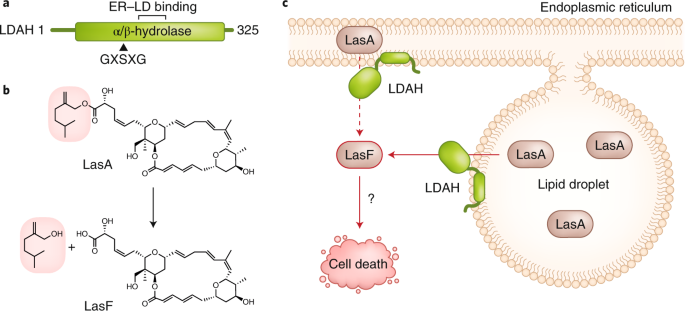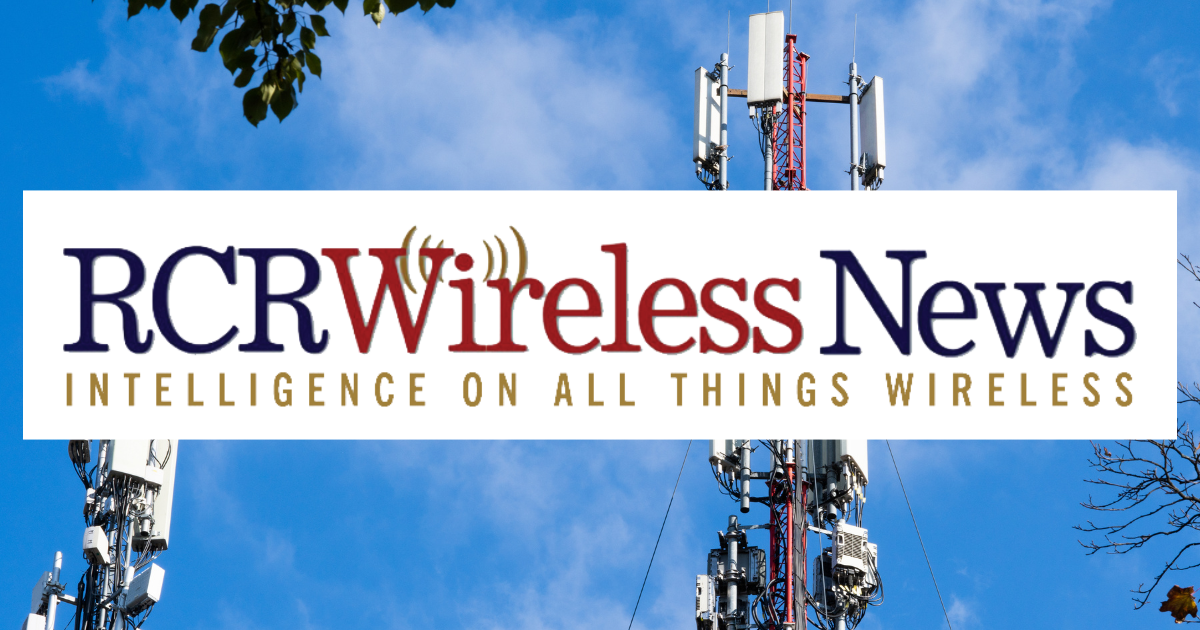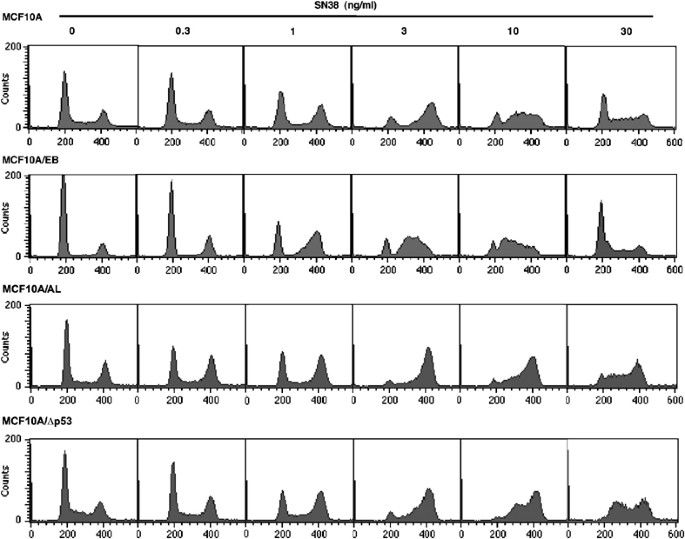- Select a language for the TTS:
- UK English Female
- UK English Male
- US English Female
- US English Male
- Australian Female
- Australian Male
- Language selected: (auto detect) - EN
Play all audios:
ABSTRACT STUDY DESIGN: A randomized, prospective, double-blind, placebo-controlled clinical trial. OBJECTIVES: To determine the effect of COX-2-selective inhibitor on the prevention of
heterotopic ossification (HO) after spinal cord injury (SCI). SETTING: County and University Teaching Hospital, Miami, FL, USA. METHODS: A total of 76 patients were enrolled in the study.
Among them, 39 patients received placebo, and 37 received COX-2-selective inhibitor rofecoxib 25 mg daily for a period of 4 weeks. Prevention was started 3 weeks after spinal cord injury
(SCI). In both groups of patients there was similar age as well as the level of SCI and ASIA impairment scale. Two methods were used to diagnose early HO, clinical symptoms and bone
scintigraphy. Radiography was used for diagnosis of late stages of HO development. RESULTS: A significantly lower incidence of HO was found in the rofecoxib group (13.4%) than in the placebo
group (33.3%: _P_<0.05). In patients receiving rofecoxib, there was a 2.5 times lower relative risk of developing HO than in the placebo group (95% CI, 2.3–6). There were no patients who
discontinued the study due to adverse effects of medication. CONCLUSION: Our data suggest that COX-2-selective inhibitor rofecoxib is an effective medication in prevention of HO after SCI.
SIMILAR CONTENT BEING VIEWED BY OTHERS STATIN USE IS ASSOCIATED WITH REDUCED MOTOR RECOVERY AFTER SPINAL CORD INJURY Article Open access 03 February 2021 IMPACT OF COMMONLY ADMINISTERED
DRUGS ON THE PROGRESSION OF SPINAL CORD INJURY: A SYSTEMATIC REVIEW Article Open access 24 October 2024 THE POTENTIAL ROLE OF RHOA/ROCK-INHIBITION ON LOCOMOTOR RECOVERY AFTER SPINAL CORD
INJURY: A SYSTEMATIC REVIEW OF IN-VIVO STUDIES Article 16 February 2025 INTRODUCTION Heterotopic ossification (HO) is one of the most common orthopedic complications after spinal cord injury
(SCI). Incidence of HO after SCI is 40–50%;1, 2, 3, 4 in 10–20% of these patients HO develops in a more severe form, which usually needs surgical treatment.5, 6 The etiology of HO remains
unknown. Based on the results obtained from experiments in animal models, it seems that mesenchymal cells play an important role in the development of HO. These cells may, under various
systemic or local stimuli, differentiate ectopically into osteoblasts, the cells responsible for bone formation.7, 8 Since the etiology of HO is uncertain, it is difficult to design an
effective prevention. However, it is well known that nonsteroidal anti-inflammatory drugs (NSAID) have significant preventive effect on the development of HO after total hip arthroplasty
(THA).9, 10 Based on these positive results in orthopedic patients, we conducted a study where NSAID indomethacin was used in the prevention of HO after SCI.11 The results of that study
showed a significant three-fold reduction in the incidence of HO in indomethacin-treated patients. Since indomethacin belongs to a group of nonselective NSAID with significant
gastrointestinal toxicity that appears to be related to cyclooxygenase 1 (COX-1) inhibition,12 the goal in the present study was to evaluate the effect of COX-2-selective inhibitor that is
known to have significantly lower incidence of gastrotoxicity than nonselective NSAID. METHODS The study was an evaluation of the effect of COX-2-selective inhibitor rofecoxib on prevention
of HO after SCI. Patients involved in the study were admitted to the rehabilitation center and randomly divided into two groups. Exclusion criteria were history of peptic ulcer disease or
gastrointestinal bleeding, age of patient outside the range of 18–60 years and pregnancy. There was no concomitant use of any other NSAID during the study. One group received oral rofecoxib
(Vioxx, Merck, Rahway, NJ, USA) 25 mg daily and the other group placebo for a period of 4 weeks. An informed consent form, approved by institutional review board, was obtained from all
patients prior to the study. The number of patients in each group, age, gender and time period after injury are shown in Table 1. Table 2 summarizes clinical characteristics, level of spinal
cord injury and ASIA impairment scale. Patients in the rofecoxib group were started in the study 25±7 days after SCI, and those in the placebo group were started 23±5 days postinjury.
Diagnosis of HO was based on clinical symptoms and signs (local edema, fever and decreased joint range of motion) and bone scintigraphy by clinician and radiologist without the knowledge of
patient group selection. A three-phase bone scintigraphy was used as reported earlier.13 The following diagnostic algorithm was used: All patients on the study medication (COX-2-selective
inhibitor or placebo) were followed clinically until they developed swelling of joint(s), with or without fever or reduction of ROM. Prior to bone scintigraphy, radiographic studies and
compression ultrasonography were obtained to rule out trauma or vein thrombosis of affected extremity. In patients with positive bone scintigraphy for HO, the study was discontinued and
treatment was started with disodium etidronate (Didronel, Proctor&Gamble Pharmaceuticals Inc., Mason, OH, USA) as reported earlier.14 The significance of differences between the groups
was statistically evaluated by _χ_2-test. RESULTS Table 1 illustrates similar age, gender and the postinjury period. Also, there were similar clinical characteristics; the level of paralysis
and ASIA impairment scale (Table 2). Table 3 summarizes the results of the study. In the control group of patients taking placebo, 33.3% developed HO that was statistically higher than
13.4% taking rofecoxib (_P_<0.05). Also, there was a higher risk for developing HO in placebo group; RR=2.5 (95% CI, 2.3–6). In the present study, there were no patients in either group
who had significant gastrointestinal adverse effects due to experimental drug. DISCUSSION The prevention of HO with NSAID in patients who have had THA has been investigated extensively and
showed to be effective.8, 9, 15, 16 Numerous studies in orthopedic patients have documented that the incidence of HO after THA is significantly reduced by oral indomethacin (25 mg three
times daily for 6 weeks postoperatively). These observations stimulated our first study in SCI patients, where we evaluated the effect of indomethacin on the incidence of HO after SCI.11 We
found 2–3 times lower incidence of HO after indomethacin prevention. However, nowadays there has been some reservation in using indomethacin and other similar NSAID. Indomethacin belongs to
a group of nonselective NSAID, which is known to be associated with higher incidence of adverse effects on gastrointestinal (GI) tract than COX-2-selective inhibitors.17, 18, 19 Owing to
beneficial pharmacological characteristics of COX-2-selective inhibitors, we designed the present study where we evaluated rofecoxib. As illustrated in Table 4, similar to the first
double-blind study with indomethacin, rofecoxib had similar effectiveness in the prevention of HO after SCI. The results of our studies with indomethacin and rofecoxib confirm previous
reports on beneficial effect of NSAID on development of HO when they were used in ‘secondary’ prevention after surgical removal of HO.20, 21, 22 It appears that inflammation plays an
important role in the genesis of HO in the early stages after SCI as well as after surgical resection of HO. The mechanism of action of NSAID on the prevention of HO remains to be
determined, but it seems that these drugs have inhibitory effects on the expression of factors that trigger the ectopic osteogenesis. At the site of bone formation, the crucial events are
the recruitment, proliferation and differentiation of mesenchymal stem cells (MSCs).23 These cells are primitive precursors capable of differentiating in many cell types including
osteoblasts, chondroblasts, adipocytes, fibroblasts and smooth muscle cells.24, 25 Recent studies have shown that prostaglandins regulate MSC differentiation into osteoblastic cells and are
critically involved in new bone formation.26 Another factor important in formation of HO are bone morphogenic proteins (BMPs).27, 28 Among the BMPs, BMP-2, -4, -7 have been recognized as
potent bone inducers.29, 30 It is not clear as to what is the functional relationship between prostaglandins and BMPs, but it seems that prostaglandins have more ‘upstream’ function and are
able to induce BMP expression in soft tissue.26 Based on the present knowledge on new bone formation, the effect of NSAID on HO is in the earliest stages, at the time of recruitment and
proliferation of precursors of bone-forming cells. Blocking the synthesis of prostaglandins by NSAID inactivation of COX-2 enzymes the early processes of bone formations are inhibited. Our
study was not designed to determine the effect of COX-2-selective inhibitors on GI toxicity; however, based on the data from large clinical trials on GI effects of COX-2-selective
inhibitors, in our opinion, COX-2-selective inhibitors are preferred in prevention of HO after SCI. These drugs have similar efficacy to nonselective NSAID but better tolerability and less
adverse effects.31, 32, 33, 34 CONCLUSION The present study indicates that COX-2-selective inhibitor rofecoxib is an effective drug in the prevention of HO after SCI. In patients receiving
rofecoxib, there was 2.5 times lower incidence of HO based on clinical and scintigraphic diagnosis. Our data also suggest that inflammation is an early clinical sign in the development of HO
after SCI and that NSAID may have significant inhibitory effect on formation of ectopic bone. If the future clinical investigation confirms our results, the use of NSAID in early periods
after SCI might be recommended as a standard of care for SCI patients. REFERENCES * Abrasion AS . Bone disturbances in injuries to spinal cord and cauda equina (paraplegia): their prevention
by ambulation. _J Bone Joint Surg_ 1947; 30: 982–991. Article Google Scholar * Heilbuoss N, Kuhn Jr WG . Erosive bone lesions and soft tissue ossification associated with spinal cord
injuries (paraplegia). _Radiology_ 1947; 48: 579–585. Article Google Scholar * Liberson M . Soft tissue calcifications in cord lesions. _JAMA_ 1953; 152: 1010–1015. Article CAS Google
Scholar * Banovac K, Gonzalez F . Evaluation and management of heterotopic ossification in patients with spinal cord injury. _Spinal Cord_ 1997; 35: 158–162. Article CAS Google Scholar *
Garland DE . A clinical perspective on common forms of acquired heterotopic ossification. _Clin Orthop Rel Res_ 1991; 263: 13–29. Google Scholar * Garland DE, Orwin JF . Resection of
heterotopic ossification in patients with spinal cord injuries. _Arch Phys Med Rehab_ 1987; 242: 169–176. Google Scholar * Puras JE, Miller MD, Rosier RN . Pathologic bone formation. _Clin
Orthop Rel Res_ 1989; 245: 269–281. Google Scholar * Ekelund A, Brosjo O, Nilsson OS . Experimental induction of heterotopic bone. _Clin Orthop Rel Res_ 1990; 263: 102–112. Google Scholar
* Kjaersgaard AP, Schmidt SA . Total hip arthroplasty. The role of anti-inflammatory medication in prevention of heterotopic ossification. _Clin Orthop Rel Res_ 1991; 263: 78–86. Google
Scholar * McMahon JS, Waddell JP, Matron J . Effect of short course indomethacin on heterotopic bone formation after uncemented total hip arthroplasty. _J Arthroplasty_ 1991; 6: 259–264.
Article CAS Google Scholar * Banovac K, Williams JM, Patrick LD, Haniff YM . Prevention of heterotopic ossification after spinal cord injury with indomethacin. _Spinal Cord_ 2001; 39:
370–374. Article CAS Google Scholar * Vane JR, Botting RM . Anti-inflammatory drugs and their mechanism of action. _Inflamm Res._ 1998; 47(Suppl 2): 578–587. Google Scholar * Banovac K,
Gonzalez F, Wade N, Bowker JJ . Intravenous disodium etidronate therapy in spinal cord injury patients with heterotopic ossification. _Paraplegia_ 1993; 31: 660–666. CAS PubMed Google
Scholar * Banovac K, Gonzalez F, Renfree KJ . Treatment of heterotopic ossification after spinal cord injury. _J Spinal Cord Med_ 1997; 20: 60–65. Article CAS Google Scholar * Ritter MA,
Gioe TJ . The effect of indomethacin on para-articular ectopic ossification following total hip arthroplasty. _Clin Orthop_ 1982; 167: 113–117. Google Scholar * Schmidt S et al. The use of
indomethacin to prevent the formation of heterotopic bone after total hip replacement. A randomized, double blind clinical trial. _J Bone Joint Surg_ 1988; 70A: 834–838. Article Google
Scholar * Langman MY et al. Adverse upper gastrointestinal effects of rofecoxib compared with NSAIDs. _JAMA_ 1999; 282: 1929–1933. Article CAS Google Scholar * Bombardier C et al.
Comparison of upper gastrointestinal toxicity of rofecoxib and naproxen in patients with rheumatoid arthritis. _N Engl J Med_ 2002; 343: 1520–1528. Article Google Scholar * Laine L et al.
A randomized trial comparing the effect of rofecoxib, a cyclooxygenase 2- specific inhibitor, with that of ibuprofen on the gastrointestinal mucosa of patients with osteoarthritis.
_Gastroenterology_ 1999; 117: 776–783. Article CAS Google Scholar * Stover SL, Nieman KMW, Tullos J . Experience with surgical resection of heterotopic bone in spinal cord injury
patients. _Clin Orthop Rel Res_ 1991; 263: 71–77. Google Scholar * Schurch B, Capaul M, Vallaton MB, Rossier AB . Prostaglandin E2 measurements: their value in the early diagnosis of
heterotopic ossification in spinal cord injury patients. _Arch Phys Med Rehabil_ 1997; 78: 687–691. Article CAS Google Scholar * Biering-Sorenson F, Tonderola F . Indomethacin and
etidronate for the prevention of recurrence of heterotopic ossification after surgical resection. _Paraplegia_ 1993; 31: 513–515. Google Scholar * Bruder SP, Fink DJ, Caplan AI .
Mesenchymal stem cells in bone development, bone repair, and skeletal regeneration therapy. _J Cell Biochem_ 1994; 13: 721–727. Google Scholar * Wozney JM . The bone morphogenic protein
family and osteogenesis. _Mol Reprod Dev_ 1992; 32: 160–167. Article CAS Google Scholar * Bosch P et al. Osteoprogenitor cells within skeletal muscle. _J Orthop Res_ 2000; 18: 933–944.
Article CAS Google Scholar * Zhang X et al. Cyclooxygenase-2 regulates mesenchymal cell differentiation into the osteoblasts lineage and is critically involved in bone repair. _J Clin
Invest_ 2002; 109: 1405–1415. Article CAS Google Scholar * Yamaguchi A et al. Recombinant human bone morphogenic protein–2 stimulates osteoblastic maturation and inhibits myogenic
differentiation _in vitro_. _J Cell Biol_ 1991; 113: 681–687. Article CAS Google Scholar * Chen D et al. Differentiational roles for bone morphogenic protein receptor type IB and IA in
differentiation and specification of mesenchymal precursor cells to osteoblasts and adipocytes lineages. _J Cell Biol_ 1998; 142: 295–305. Article CAS Google Scholar * Urist MR . Bone
morphogenic protein: the molecularization of skeletal system development. _J Bone Miner Res_ 1997; 12: 343–346. Article CAS Google Scholar * Wozney JM et al. Novel regulators of bone
formation: molecular clones and activities. _Science_ 1988; 242: 1528–1534. Article CAS Google Scholar * Cannon GW et al. Rofecoxib, and a specific inhibitor of cyclooxygenase 2, with
clinical efficacy comparable with that of diclofenac sodium. _Arthritis Rheumatism_ 2000; 43: 978–987. Article CAS Google Scholar * Geba GP et al. Efficacy of rofecoxib, celebrex and
acetaminophen in osteoarthritis of the knee. _JAMA_ 2002; 287: 64–71. Article CAS Google Scholar * Day R et al. A randomized trial of the efficacy and tolerability of the COX-2 inhibitor
rofecoxib _vs_ ibuprofen in patients with osteoarthritis. _Arch Intern Med_ 2000; 160: 1781–1787. Article CAS Google Scholar * Watson DJ et al. Gastrointestinal tolerability of the
selective cyclooxygenase-2 (COX-2) inhibitor rofecoxib compared with nonselective COX-1 and COX-2 inhibitors in osteoarthritis. _Arch Intern Med_ 2000; 160: 2998–3003. Article CAS Google
Scholar Download references ACKNOWLEDGEMENTS This work was supported by Miami Project to Cure Paralysis and a generous donation from Mr and Mrs John Vondra. AUTHOR INFORMATION AUTHORS AND
AFFILIATIONS * Department of Rehabilitation Medicine, University of Miami School of Medicine, Miami, FL, USA K Banovac * Jackson Memorial Medical Center, Miami, FL, USA J M Williams & L
D Patrick * Department of Neurosurgery, University of Miami School of Medicine, Miami, FL, USA A Levi Authors * K Banovac View author publications You can also search for this author
inPubMed Google Scholar * J M Williams View author publications You can also search for this author inPubMed Google Scholar * L D Patrick View author publications You can also search for
this author inPubMed Google Scholar * A Levi View author publications You can also search for this author inPubMed Google Scholar RIGHTS AND PERMISSIONS Reprints and permissions ABOUT THIS
ARTICLE CITE THIS ARTICLE Banovac, K., Williams, J., Patrick, L. _et al._ Prevention of heterotopic ossification after spinal cord injury with COX-2 selective inhibitor (rofecoxib). _Spinal
Cord_ 42, 707–710 (2004). https://doi.org/10.1038/sj.sc.3101628 Download citation * Published: 25 May 2004 * Issue Date: 01 December 2004 * DOI: https://doi.org/10.1038/sj.sc.3101628 SHARE
THIS ARTICLE Anyone you share the following link with will be able to read this content: Get shareable link Sorry, a shareable link is not currently available for this article. Copy to
clipboard Provided by the Springer Nature SharedIt content-sharing initiative KEYWORDS * prevention * heterotopic ossification * spinal cord injury * COX-2-selective inhibitor * rofecoxib








